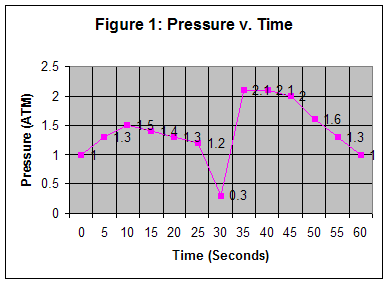The lab reports written in this class will be modeled after the formal technical lab reports many scientists write. Label each of the sections like I have done. Your lab report must have all of these sections and be in this format. (If this format is not followed, points will be taken away.) No double spacing.
“How to Write a Formal Lab Report(Title)”
Introduction:
The introduction should include all background information to familiarize the reader with the topic. To provide enough information to anyone who may read this in order for that person to understand the purpose/data/and results. You must also include a clear statement of the purpose of this lab. Lastly, you must state your hypothesis.
Materials:
(This section simply lists the materials you will be using to complete the lab. Please take note of the format, one column that lists your materials may not be the best way to accomplish this. If more than 6 materials will be listed, use more than one column. See below.)
-250 ml Beaker |
-50 ml water |
-Hot Plate |
-Thermometer |
-Stirring Rod |
-Crucible |
-Graduated Cylinder |
-100 ml Flask |
-Test Tube |
-Computer Probe |
-Graph Paper |
-Striker |
(In the sections labeled procedures, you must include very detailed step-by-step directions to carry out the lab. Assume the reader knows nothing and needs very specific directions. Your variables must be measurable and you need to tell the reader exactly how they will measure these variables. Simply stating “observe” or “record” is not enough. What exactly will be recorded and observed. Ask yourself, how will the reader measure the results? What will we compare our results to? You will know that your procedures are sound if two different people can follow your directions and get the same results.)
*This is the end of the Pre-lab. All pre labs must be typed and well organized. This format should be followed; failure to do so will result in a deduction in points. The point of a Pre-Lab is to come to class with a GREAT understanding of the activity and your plan. If this Pre-Lab is not done BEFORE you come to lab, your grade will be adversely affected. Since the point of the pre-lab is to familiarize yourself with the activity BEFORE you come to class, then handing one in late defeats the purpose. This is why Pre-Labs will not be accepted late.
Data / Calculations:
All rough data must be organized and presented in this section. Utilize graphs, diagrams, and tables to clearly accomplish this goal. Label Tables and Figures properly (Figures=graphs, diagrams, pictures; Tables=tables). All calculations necessary to the conclusion should be included here. Show the formula and all steps to reach the final answer
|

|
||||||||||||||||||||||||||||||
Conclusion:
This section should contain your overall thoughts on the lab. In one part, tell the reader if your results prove or disprove your hypothesis and why. Be “matter of fact” and support your statements by referring to your data (ex. .looking at figure 1, you can clearly see that the pressure fluctuated between the 20 – 40 second interval…) In the second part, tell the reader anything you may have learned from this lab and, if you wish, give your honest opinion or comment about the lab. Lastly, make sure you do the following: 1) “Refer to your data” (ex. ..in Table 1, the data suggests….); 2) “Answer” the big question (If the lab called for determining the density of various objects, then tell the reader what the observed densities were for each object!); 3) “Big Picture” My overall assessment of the lab report will indicate to me whether you have a sound understanding of the purpose for the lab; 4) “Suggestion” what you could have done differently to get better results.
SFP Home | Science Home | Barron's Web Site | Lab Index | WebChem